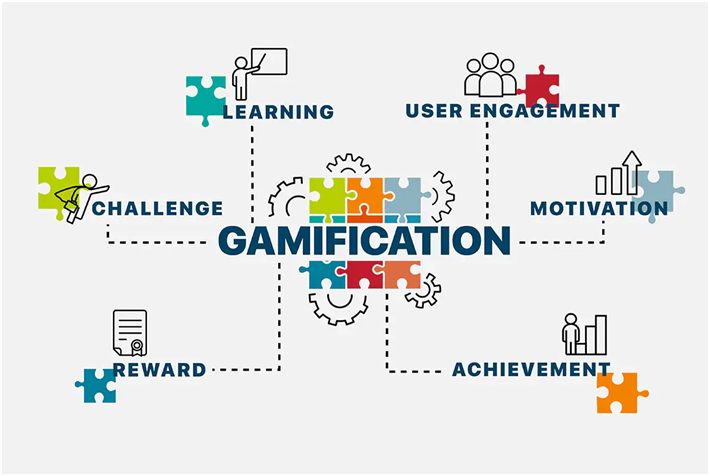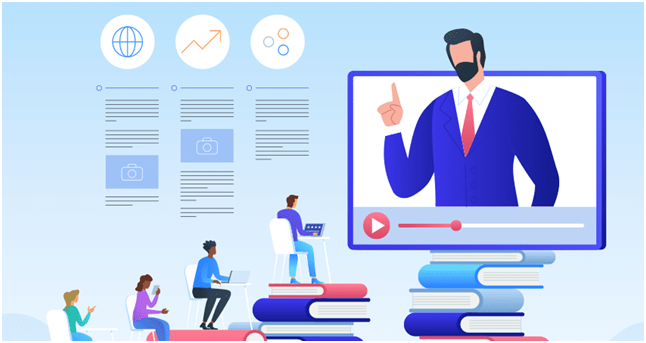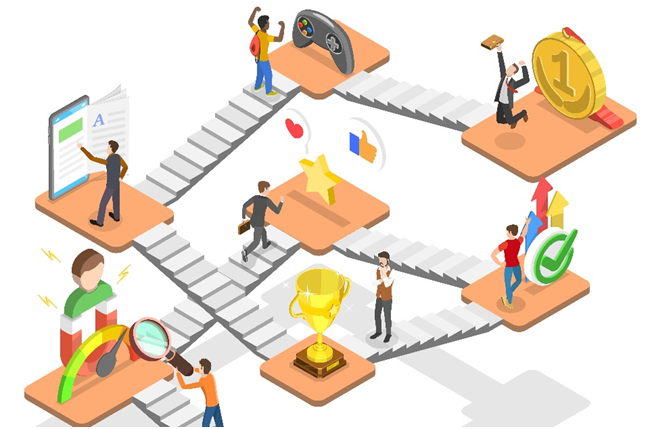Infusing Joy into Learning: Gamification in Corporate Training

Introduction
Long before formal education, aspects of play helped young humans build skills. Games of imitation and roleplaying allowed the safe practice of tasks needed for survival. As civilizations developed schools, student contests and competitions motivated academic achievement. The connection between education and recreation has deep foundations.
The Evolutionary Path of Learning, Interwoven with Gamification
In medieval times, educators sang rhyming songs to the uneducated masses, harnessing the power of rhythm as a mnemonic device to aid their learning. In the 19th century, classrooms embraced competitions, fostering positive academic rivalries and incentivizing practice with rewards and public recognition. In the 1920s, Sidney Pressey developed an early “teaching machine" that allowed self-paced learning of theoretical concepts. The integration of television entertainment and education, utilizing animation, songs, and games and incorporating interactive scenarios, paved a significant leap in the evolution of gamification in learning. The video game industry’s rise in the 1980s opened doors for gamified learning. In the 2000s, educational software embraced gaming principles, using adventure-based games for skill development. This journey underscores the profound emotional link between education and recreation throughout history.

The Synergy between Corporate Training and Gamification
Corporates have embraced gamification as a transformative element in online training programs within their Learning Management Systems (LMS) and Learning Experience Platforms (LXPs), introducing innovative and engaging features to enhance the learning experience. These initiatives often include interactive modules with game-like challenges, simulations, and quizzes, creating a dynamic and participatory atmosphere.

Points-based reward systems and leaderboards infuse an element of healthy competition, fostering motivation and a sense of achievement among employees. Badges, certifications, and immediate feedback mechanisms further contribute to a gamified learning environment, providing tangible recognition and insights into individual performance. Integrating adaptive learning paths and quests ensures a personalized and exciting educational journey, catering to personal progress and keeping learners engaged. Corporates strategically employ gamification to make online training informative but also interactive, enjoyable, and conducive to effective skill acquisition and retention.

Positive Impact of Gamification on Corporate Training
- Increased Engagement:
- According to a study by a leading LMS provider, companies that incorporated gamification into their training programs experienced a 48% increase in engagement.
- A report by Aberdeen Group found that organizations using gamification saw a 23% increase in employee engagement compared to those without gamified elements.
- Improved Retention and Learning Outcomes:
- The Journal of Educational Technology & Society reported that gamification led to a 40% increase in learner retention rates.
- A study published in the International Journal of Human-Computer Studies found that gamification improved learners’ cognitive learning outcomes by 14%.
- Enhanced Motivation:
- A survey by a leading LMS provider revealed that 89% of employees believed they would be more productive if their work were more gamified.
- A study by the University of Colorado Denver Business School indicated that employees who participated in gamified training showed higher motivation levels than those in traditional training programs.
- Behavioral Change:
- A case study by Deloitte showed that gamification in training led to a 37% increase in sales performance and a 14% increase in employee productivity.
- A report by Gartner predicted that by 2020, more than 70% of global organizations would use at least one gamified application for their workforce.
- Team Collaboration:
- A study by Badgeville found that organizations using gamification in their training programs reported a 20% increase in employee collaboration.
- According to a report by McKinsey, businesses that promote a collaborative working environment through gamification are 2.5 times more likely to be top performers.
- Time and Cost Savings:
- A study by eLearning Industry reported that organizations using gamification experienced a 50% reduction in the time required for employee training.
- A report by M2 Research estimated that gamification could lead to a 10-15% cost reduction in training expenditures.
Gamification is a valuable strategy for organizations to enhance employee engagement, learning outcomes, and overall performance.

Conclusion
In the corporate realm, the integration of gamification into training methodologies has proven to be a practical strategy. Beyond the apparent benefits of performance improvement, there’s a noticeable shift in how people approach learning. Gamification isn’t just a tool; it transforms training into an engaging process of discovery and accomplishment. As organizations use gamification to boost involvement, improve learning outcomes, and encourage collaboration, they find themselves in a space where work and play intersect. This shift towards a workforce that values ongoing learning and shared success is evidence of the tangible advantages of integrating gamified elements into learning platforms for training programs.
For more information on our pursuit, reach out to us at connect@excelsoftcorp.com

